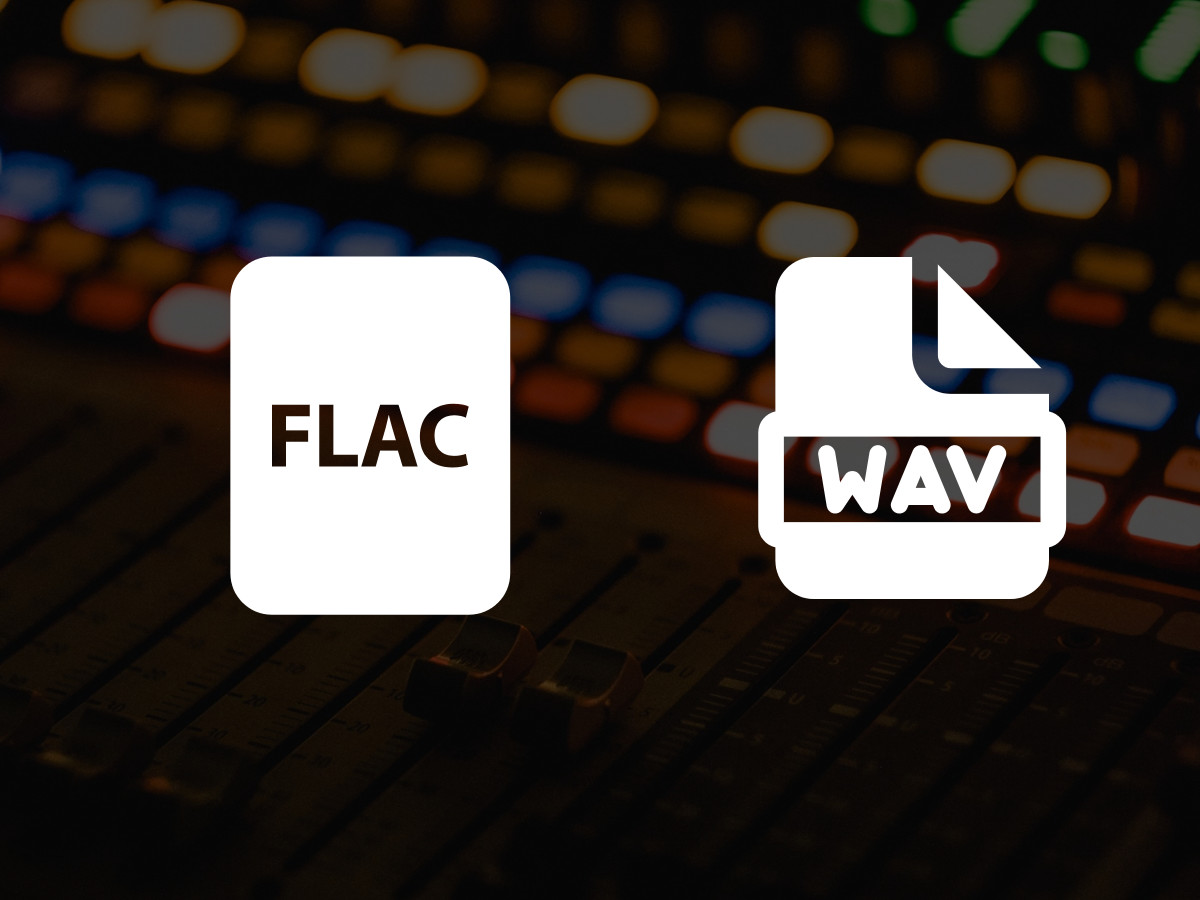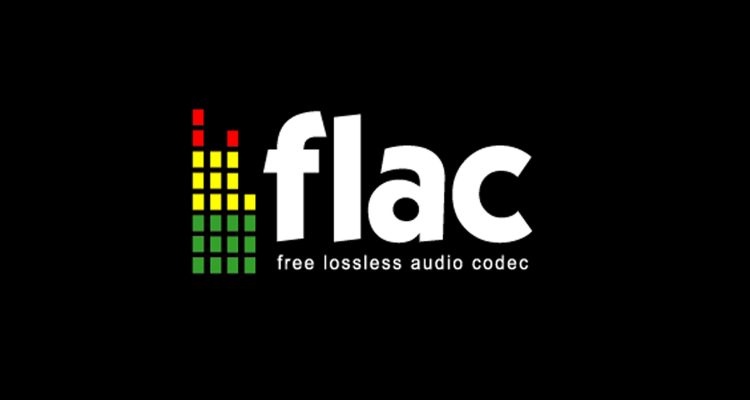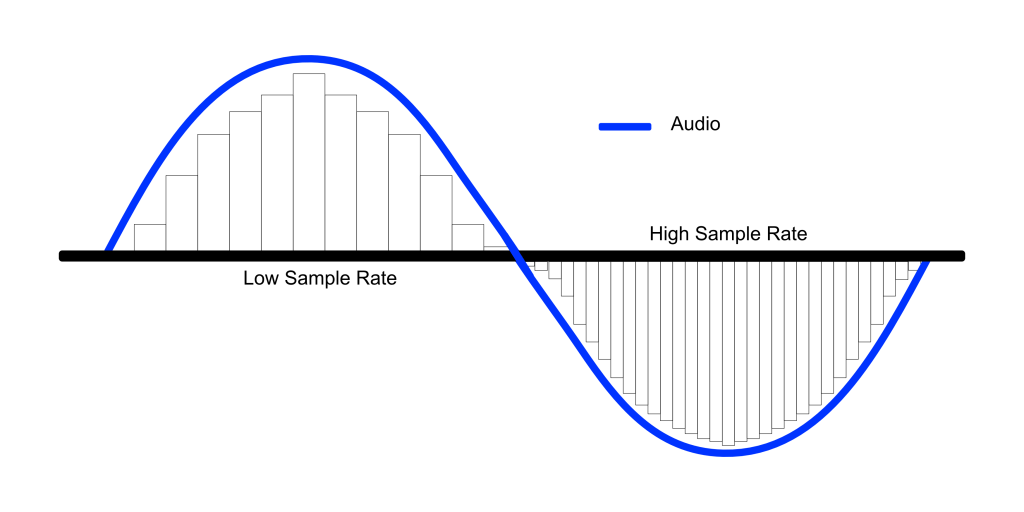Even if you have a rudimentary understanding of sound formats, knowing the technical differences between them might assist you gain the most from your sound. Both FLAC and WAV have an impact on your sound quality. So, how can you determine what is the best solution for your situation?
Because FLAC and WAV are both lossless sound formats, there is no distinction in sound performance. FLAC folders are a preferable alternative for storing music than decompressed WAV documents since they are compressed. WAV files, moreover, are often preferred for sound editing.
The sound differences among WAV and FLAC sound formats will be discussed in this post, as well as if using either makes an impact to the user.

Which Is Better: FLAC or WAV?
As a beginner, the difference between FLAC and WAV is unlikely to matter. The fact is that there aren’t likely to be any significant variations in performance among these two sound formats. Although, if you’re new to the scene of digital content, you’ll notice minor changes, however minor, between one format and another.
To better grasp this, let’s glance at the distinctions among FLAC and WAV sound formats.
What Is the FLAC Audio Format?
The acronym FLAC refers to the Free Lossless Audio Codec. The phrase “lossless” relates to the reduction of a decompressed sound recording without sacrificing the original quality sound.
This digital sound codec is similar to MP3, but it has better audio clarity.
Furthermore, FLAC folders are simpler to tag, which means you may edit information like album title, artist, composer, and much more.

What Is the WAV File Format?
Waveform Audio File Format is the abbreviation for Waveform Audio File Format. IBM and Microsoft created this WAV codec, which is a common audio format. This file was first used to save sound files on a computer, and then it evolved into a core music sound form. The majority of files are uncompressed.
The WAV format, similar to FLAC, is uncompressed, though it has a distinct purpose: it allows you to send raw audio over the internet. As a result, it’s an exact replica of the sound origin.
FLAC vs. WAV Format Comparison
Because the FLAC codec is accessible, it can be used to store extra sound data. Both data level as well as the sampling rate, though, may be constrained due to its structure.
FLAC also is unsuitable with some gadgets and music players, so make sure the equipment you are using is supported.
WAV has been the common template for most music players due to its long background, and it supports an infinite bit depth and sample rate. WAV folders are much more flexible in terms of editing and tweaking. The type of file is bigger than FLAC since it is older, and this can either be utilized as a specific format.
When you consider the benefits and drawbacks, you can conclude that both forms are balanced. However, it is when we delve deeper into each format that we realize how distinct they are. Let’s look at each feature and see which is the greatest.
Compressed and Uncompressed Formats
Although sound signals are reduced, some of the file’s info is deleted in order to minimize size of the file. This makes it much easier to retain without needing a lot of storage space. Because material is eliminated, the sound clarity suffers as a result of the compression strength.
FLAC is indeed a compressed sound format, as I previously stated. However, unlike lossy sound formats such as AAC, FLAC’s compression has no effect on audio quality, hence FLAC is called lossless.
As a result, FLAC covers half the storage while maintaining the same quality. As a result, we suggest FLAC for both listening and saving music. However, when editing audio recordings, that you may want as much information as possible, it may not be the ideal option.
Sample Rate and Bit Depth
Without getting too scientific, let’s assume that the greater the sampling rate and bit depth, the greater the audio quality.
A sound file’s sample rate indicates the number of times the sound processing software analyzes it in a second. The program sample rate is frequently high, about 194 kilohertz, implying that the software analyzes and captures the sound 194,000 times per second.
The software captures roughly 16–24 bits of data to build the MP3 file during this phase. This is referred to as bit depth. The higher the bit depth, the greater the sound translation.
FLAC has a set sample rate as well as bit depth which causes it to lose some information. WAV is also bigger and has an unlimited sampling rate and bit depth.
The sound quality, on the other hand, appears to be the same even throughout the original recording. Due to the lossless file type, these options have no effect on sound quality.

Free and Open-Source
In this analysis, FLAC occurs to be a far superior option and easily defeats WAV.
FLAC is extensible and open-source, as well as adjustable. In contrast to WAV, which Microsoft owns the copyright on, FLAC folders type can be used for any type of sound.
Nevertheless, this does not imply that WAV is worse. FLAC was created to following in the footsteps of WAV.
If you are a competent editor, converting it and using it for multiple audio files, such as FLAC, is simple.
Quality Control Inspections
Despite the fact that some people claim to be able to tell the difference between WAV and FLAC, the great majority of consumers cannot. The sound quality of FLAC or WAV is similar.
If you assume you do have perfect ears, own high-end sound equipment, and enjoy extensively scrutinizing it all to use all of your sound instrument, please conduct your own experiments. Go ahead and test it if you notice a difference and don’t mind the enormous number of files of WAV folders.
FLAC is the way to use it for everything else. Both codecs support high-resolution audio and can be converted to other formats. If you use the right sound adaptor, you must have no difficulties getting the form you desire.
WAV to FLAC Conversion
Google returns a plethora of results for best WAV to FLAC transformer, so you’re given choices when it comes to finding the ideal file converter. The basic idea is that you submit the sound you want, choose the type you want, and the online software will convert it for you.
Here are a few of the most notable free online converters for your consideration:
• Zamar: This well-known converter is one of the best on the market, making it suitable for those who do not want to install a FLAC to WAV converter on their computer.
• Audacity: This excellent video converter works with both Windows and Mac formats and provides a variety of video conversion, editing, and sharing options. To get started, simply upload and install the software from the website.

• Covertio: This internet converter can transform FLAC to WAV, FLAC to MP3, MP4 to WebM. It’s very simple to use: just go to the website, choose your document and format, and push convert.
Is There Quality Reduction When Converting WAV To FLAC?
When transcoding WAV and FLAC, there will be no performance degradation. Changing a highly compressed format such as audio files to FLAC or WAV won’t reduce quality because you’ll be decompressing the sound file and extracting the original data therein. When converting an uncompressed audio file to another, there will be no quality loss.
Consider it as though you’re unwrapping a present and removing the wrapping paper.
When you convert uncompressed audio to a highly compressed format like MP3 or MP4, the sound quality suffers since you’re compacting a good sound file into inferior packaging.
It’s possible that the sound will glitch, resulting in a muted track. Furthermore, if you choose a poor-quality converter, you risk damaging the recording or maybe completely destroying the track.
Is There a Difference in Audio Quality Between FLAC and WAV?
When compared to other common sound formats like MP3 or MP4, WAV and FLAC files significantly distinguish themselves in sound quality. Music enthusiasts have become more conscious of the larger spectrum of audio that can be generated through a good sound format as technology has developed.
When it comes to sound, it doesn’t matter whether you use WAV or FLAC.
These formats authentically reflect the audio quality that technicians and artists strive for throughout the filming process, rather than listening to music in highly compressed audio files, which reduce both size of the file and audio quality.

Such form was previously available, but because to increased awareness of sound performance and music technology, we now have the skills to replicate that song perfectly.
Its contrast ratio, as well as the bit depth and sample rate, make it easier to hear the music in the recording. It’s almost as if someone took the original track and turned it into a smooth, gorgeous music for everybody to enjoy.
Therefore, whenever you listen to the music and contrast it to the prior sound, the obvious difference is all proof you ought to understand why high-resolution sound formats are significant as well as how it affects your listening experience.
Is Special Equipment Required to Play FLAC or WAV Sound?
No special equipment is required to playback hi-res audio. The format is supported by a multitude of streaming services, and also comes pre-installed on the majority of devices.
Nonetheless, one must invest in a good set of headphones to truly appreciate the benefits of lossless sound formats.
To hear the difference and have the best audio experience possible, you may also need to purchase a digital to analog converter as well as an earphone amplifier.
If your device lacks audio-playing software, it’s easy to install VLC (VideoLAN Client) that is both free and able to play high-resolution audio.
If you want a more straightforward setup, companies such as Audivarna provide products and technology that include built-in high-resolution streaming services.
Additionally, one might invest in essential audio software such as JRiver Media Center, that touts itself as the best alternative for excellent sound quality.
If you do want to play to high-resolution audio on the go, smartphones like the Samsung Wave series support FLAC. On the other hand, WAV files are supported by every Android smartphone.
It’s not difficult to identify the appropriate application for playing various FLAC and WAV files.
Conclusion
The sound formats WAV and FLAC are very similar. Unless you’re a little of an enthusiast searching for the ideal choice between the two, it’ll be a personal choice – and the details above should be plenty to help you decide.
If you’re merely a regular listener, though, any audio file format, whether WAV or FLAC, will provide a satisfying listening pleasure.
As a result, we prefer FLAC, which is roughly half the size of MP3 while maintaining the same sound quality.
You may also be interested in:
- Audio File Formats Explained
- FLAC Vs MP3 – Differences Explained
- Understanding Sample Rate, Bit Depth & Depth Rate
